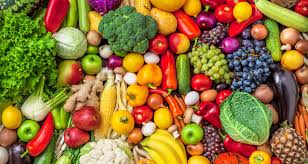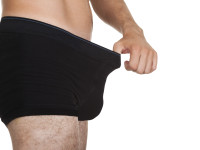Uncategorized
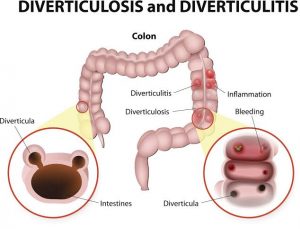
DIVERTICULOSIS refers to the presence of small out-pouching(called diverticula) or sacs that can develop in the wall of the gastrointestinal tract.
• While diverticula can be present anywhere in the intestines, they are most common on the left side of the large intestine, the area known as the Descending and Sigmoid Colon.
When one or more of these pouches become inflamed or infected, the condition is called DIVERTICULITIS.
EPIDEMIOLOGY OF DIVERTICULAR DISEASES
• Diverticulosis is a common disorder, especially in older people.
• The condition is uncommon in people under the age of 30 years of age, and is most common in those over 60.
• Diverticulosis may be somewhat more common in men than in women.
CAUSES/PATOPHYSIOLOGY OF DIVERTICULAR DISEASE
• No one knows for certain why diverticulosis develops; however, a few theories have been suggested;
• Some experts believe that abnormal intermittent high pressure in the colon due to muscle spasm or straining with stool may cause diverticula to form at weak spots in the colon wall.
• Historically, low-fibre diets were felt to play a ,major role in the development of diverticulosis. However, recent studies suggest that this is not only the case.
There also appears to be a genetic predisposition to diverticulosis; that is, if your parent or sibling has diverticulosis, you may be more likely to develop it than someone who does not have a family member with diverticulitis.
SYMPTOMS OF DIVERTICULAR DISEASES
• Most patients with diverticulosis have no symptoms or complications, and will never know they have the condition.
• But when symptoms occur they are usually mild and includes; Pain in the belly (abdomen), Bloating, Constipation (less often, diarrhoea) and Cramping.
• This symptoms are not specific to diverticulosis only they can be general to all diseases of the digestive tract.
Unless it is discovered during an endoscopic or radiographic (X-ray) examination, some people with diverticulosis become aware of the condition only when acute diverticulitis occurs.
• Diverticulitis is a more serious condition and causes symptoms in most people with the condition that include:
• Pain in the abdomen, usually in the lower left side
• Bleeding, bright red or maroon blood may appear in the stool, (a symptom of rectal bleeding). Bleeding is often mild and usually stops by itself; however, it can become severe.
• Fever
• Nausea
• Vomiting
• Chills
Constipation (less often, diarrhoea). d
DIAGNOSIS OF DIVERTICULAR DISEASES
• Diverticular disease is generally discovered through one of the following examinations:
• Barium enema: This x-ray test involves putting liquid material into the colon through a tube placed in the rectum. The x-ray image shows the outline of the colon, and can identify if diverticula, large polyps or growths are present.
• Colonoscopy: This test uses a thin, flexible tube with a light and camera to view the inside of the colon. Diverticula as well as polyps and other abnormalities can be seen with this instrument.
CT scan: This radiology test takes multiple cross-sectional pictures of the body. It is not generally performed to make a diagnosis of diverticulosis, but this type of exam, when done for other reasons, may identify diverticular.
MANAGEMENT OF DIVERTICIULAR DISEASES
• The best way to treat diverticulosis is to avoid constipation.
• Include fruits, vegetables, beans, and whole grains in your diet each day. These foods are high in fibre (25 – 38g/day).For patients with diarrhoea as symptoms a low fibre of 10-15g/day is prescribed for few days then gradually increased to RDA
• Drink plenty of fluids, because fluids and fibre work together.
• Get some exercise every day.
• Take a fibre supplement, such as Citrucel or Metamucil, every day if needed.
Schedule time each day for a bowel movement. Having a daily routine may help. Take your time and do not strain when you are having a bowel movement.
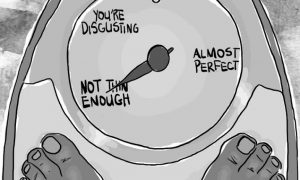
In a society where every one seemingly feels like the best way to be fit is to be thin, adoption of different feeding patterns has led to malnutrition in so many individuals.
The term ‘eating disorder’ doesn’t only relate to food but also to complex mental health condition.
There are 6 types of disorders, their symptoms and management, that would be highlighted in this article.
EATING DISORDERS
They are a group of mental disorder that are marked by an obsession with food or body shape. Mostly prevalent among young women.
This obsession however comes with heavy food restrictions, induced vomiting or stooling and extreme measures during workouts.
causes
Several factors might lead to the development of eating disorders; factors like personality traits, genetics (ongoing research with twins)
Other potential causes might include perceived pressures to be thin, cultural preferences for thinness, and exposure to media promoting such ideals i.e modelling agencies, influencers etc.
1. Anorexia nervosa: A very common eating disorder which makes people obsess about what they eat and their weight.
It is characterised by distorted body weight and an unwarranted fear of being overweight.
5. Rumination Disorder:is another newly recognized eating disorder.
It describes a condition in which a person regurgitates food they have previously chewed and swallowed, re-chews it, and then either re-swallows it or spits it out.
This rumination typically occurs within the first 30 minutes after a meal. Unlike medical conditions like reflux, it’s voluntary.
This disorder can develop during infancy, childhood, or adulthood. In infants, it tends to develop between 3–12 months of age and often disappears on its own. Children and adults with the condition usually require therapy to resolve it.
If not resolved in infants, rumination disorder can result in weight loss and severe malnutrition that can be fatal.
Adults with this disorder may restrict the amount of food they eat, especially in public. This may lead them to lose weight and become underweigh.
The term replaces what was known as a “feeding disorder of infancy and early childhood,” a diagnosis previously reserved for children under 7 years old.
Although ARFID generally develops during infancy or early childhood, it can persist into adulthood. What’s more, it’s equally common among men and women.
Individuals with this disorder experience disturbed eating either due to a lack of interest in eating or distaste for certain smells, tastes, colors, textures, or temperatures.
Common symptoms of ARFID include:
- avoidance or restriction of food intake that prevents the person from eating sufficient calories or nutrients
- eating habits that interfere with normal social functions, such as eating with others
- weight loss or poor development for age and height
- nutrient deficiencies or dependence on supplements or tube feeding
It’s important to note that ARFID goes beyond normal behaviors, such as picky eating in toddlers or lower food intake in older adults.
Moreover, it does not include the avoidance or restriction of foods due to lack of availability or religious or cultural practices.
other eating disorders
Includes purging disorder and night eating disorder.
management.
For anorexia nervosa, restoration of normal body weight with the help of a dietitian is adviseable.
For bulimia nervosa, management of any serious physical or health complications.
For binge eating, treating like both anorexia and bulimia and also focusing on psychotherapy.
conclusion
Eating disorders pose a huge threat to the health of any individual that is involved. So therefore, its highly important you see a health provider; most likely a dietitian before starting any type of diet.
Healthy Eating Starts With A Healthy Breakfast.
Investing in a healthy breakfast would reduce the global burned of diabetes and save billions in lost productivity and health-care costs. A healthy Breakfast decreases the risk of developing type 2 diabetes. Food which reduce the risk of type 2 diabetes such as vegetables, fresh fruits, whole grains and unsaturated fats need to be available and cheap, energy dense foods shunned for breakfast. Skipping breakfast also is associated with weight gain!
Individuals can reduce the risk of type 2 diabetes by:
1.) Choosing water or unsweetened coffee or tea instead of fruit juice, soda and other sugar sweetened beverages.
2.) Eating at least three servings of vegetables everyday including green leafy vegetables.
3.) Choosing nuts, a piece of fresh fruit or sugar-free yoghurt for snacks.
4.) Limiting alcohol intake to two standard drinks per day.
Choosing lean cuts of white meat, poultry and seafood instead of processed meat or red meat.
5.) Choosing peanut butter instead of butter or chocolate spread or jam for bread.
(6). You can choose from a variety of brown or white rice, whole grain or wheat, wheat or white bread. Your portion size matters a lot and bulking with vegetables would help reduce incidence of glucose spike.
7.) Choosing unsaturated fats (olive oil, canola oil, corn oil or sunflower oil) instead of saturated fat ( animal fat, palm oil, ghee, butter or coconut oil).
These recommendations will also help someone with diabetes to achieve stable control.
There’s actually a rave about the vegetarian diet and how healthy it could be; well, notwithstanding, there might be wiles attached to following the diet the wrong way.
The vegan diet entails strictly sticking to basically plant-based foods, there is really more to it than just eating more of whole grains, leafy vegetables and fresh produce.
Let’s see what it really means to be on a vegan diet and still lead a healthy lifestyle without harming our systems.
Don’t be so shocked if you see words like “ovo-pollo-lacto-flexitarian” during this little journey, a vegan diet really goes beyond just grains and leafy greens.
What Is a Vegetarian Diet?
Basically, a vegan diet is an eating pattern that includes plant-based foods, as grains, fruits, veggies, legumes, pulses, nuts and seeds, but omits meat, poultry, game, fish, shellfish or by-products of animal slaughter (not all the time though).
So you might be wondering; if not all the time, then what would you call a vegan that eats fish or poultry? Just stay with me.
The 7 Types of Vegetarian Diets
1. Lacto-ovo Vegetarian
You might have heard of ovo-lacto, they are used interchangeably; this diet totally omits any fleshy food ranging from fish, meat, insects etc. but consume dairy products and egg products. Lacto depicts dairy, while ovo depicts egg products.
2. Lacto Vegetarian
Lacto-vegetarians do not eat red or white meat, fish, or eggs, but do consume dairy products such as milk, cheese, and yoghurt.
3. Ovo Vegetarian
Ovo-vegetarians do not eat red or white meat, fish, or dairy products, but do consume egg products.
4. Flexitarian
Flexitarian is a combination of two words: Flexible and vegetarian. Flexitarians, also known as semi-vegetarians, they focus majorly on a plant-based diet but enjoy meat on occasions.
5.Pollotarian
Pollotarian is a semi-vegan diet in which an individual decides to eat chicken and other poultry but does not consume red meat, fish, and other animal meats.
6. Pescatarian
So if a pollotarian restricts meat consumption to poultry, what do you call a vegetarian that eats fish?
A pescatarian, which is also considered a flexitarian and semi-vegetarian diet. Pescatarians eat fish and shellfish but do not consume red or white meats.
7. Vegan
A vegan is an individual who decides to follow a vegan lifestyle, whether it be for personal, cultural, or ethical motives or concerns.
But unlike vegetarians that may enjoy a more liberal diet, going vegan is going without all animal products, even in the forms of honey, gelatin, wool, leather, and other animal by-product ingredients or products.
If you have considered taking this path to be a vegan, there are some things you should consider which are:

- Why choose a vegetarian diet.
Some follow a vegetarian diet for cultural reasons, while others hope to lose weight or positively impact the environment. Knowing this can inspire you to eat a sustainable plant-based diet and decide which type of vegetarian may want to try.
- Do some research on the type of diet.
Search deeply about tips and recipes that best suits your target and physiology.
It is also important to research what nutrients you may be lacking in the diet if cutting out animal products. For instance, there are nutrients vegetarians should consider taking to lower the risk of deficiencies when cutting out some food groups, including iron, vitamin B12, calcium, vitamin D, zinc, iodine, and omega-3 fatty acids.
A Registered Dietitian can further help devise a plan that best suits your personal needs and preferences, along with protection from nutritional deficiencies.
- Implement small changes slowly.
The transition from an omnivore diet could be overwhelming; it’s best you do it by eliminating each group gradually and not an all-out-at-once step.
A little bit of incorporating more plant-based proteins into your daily lunches, and swapping dairy milk with soy, almond, or another plant-based milk. With time, these tricks will start to become habits and a natural part of your daily life.
It’s important to be sure you don’t lose out on any essential nutrients while on this diet, your gut health matters a lot. Very little fermentation processes might go on in your gut leading to a reduced colony of beneficial bacteria which can affect digestion and suppress the immune system; its best you speak to a dietitian before doing the vegan diet.
There are obviously benefits attatched to breastfeeding that you already know; so lets see the ones you might not be aware of:
I’m sure many new parents aren’t prepared for the effect that having a new baby can have on their desire for lovemaking and intimacy.
Keeping it together is really hard trust me.
There are hormones responsible for some behavioural changes after childbirth and lactation period.
Lets pick these hormones and see how they play a major role in sexuality.😉
🍌ESTROGEN: All women have low levels of estrogen for the first couple of months after giving birth. Continued breastfeeding extends this period for at least six months and for some women the lower levels may last as long as they are breastfeeding. Lower estrogen levels may cause vaginal dryness, tightness and tenderness. You could apply water based lubricants during lovemaking.😁
🍉OXYTOCIN: The milk ejection reflex is triggered by the release of the hormone oxytocin. Oxytocin is also released in men and women at the time of orgasm and is recognized to increase bonding. If mother, or her partner, has concerns about milk ejection during lovemaking she can feed the baby or express beforehand to reduce milk flow. Direct pressure with the heel of the hand to the nipple can stop milk ejection or the couple can keep a towel handy to deal with leaking milk.
🍆PROLACTIN: Prolactin levels increase when baby is breastfeeding or mother is expressing milk. . Prolactin is also a part of the hormonal cascade involved in lovemaking. It counteracts the effect of the hormone dopamine which is responsible for sexual arousal and provides the body with a feeling of sexual gratification. The release of prolactin during breastfeeding creates a feeling of calm and relaxing.
🌶TESTOSTERONE : This is an androgen hormone which is usually thought of as a male hormone. It is also naturally occurring in the female body where it is produced in the ovaries and adrenal glands. Testosterone appears to contribute positively to the health of vaginal tissue and to contribute to genital sexual arousal.
Well, the hormones involved during breastfeeding might dampen sexual desire in the early months of childbirth, support from the male spouse is very important. Some mothers feel that stopping breastfeeding might reduce tendencies of high libido, and shr might also feel unhappy that she’ll deprive her infant its right, which might reduce her desire for lovemaking.
You really need to sit down as a couple and balance things between breastfeeding , parenting and being a couple.
Find time for parenting and merge it with time for intimacy😎.
Life is not hard.
Source: https://www.lllc.ca/thursdays-tip-breastfeeding-and-hormones-sexuality
NZI
I have a story about a little speaker. His name is Nzonzi.
Monday
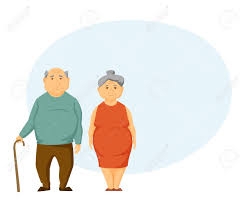
An old couple had just walked into the local shop to buy a soundbar for their sitting room. He had watched them from atop the shelve where he and his family Of four had sat for months, gathering dust. From there he watched the old home theater on the bottom shelf get bought by the old couple. The old speaker only had about 70 Watts in him, but the old man probably won’t have all his hearing right, Nzonzi thought. It’d be a match made all the way to heaven😔.
Tuesday
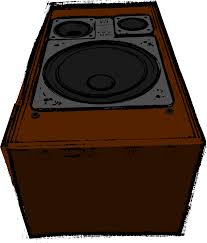
Tuesday came and Nzi watched Lami, the ugly, fat speaker get taken home by a young unhappy couple who seemed to need some music in their union. “What pressure🤔”, he thought.
All the other sound bars and speakers were getting dragged off by all sorts. He’d have given anything to be chosen by that grumpy rich woman who lugged Sam away. At least he’d live in a big house and meet lots of other cool electronics.
Their family was 5.1 channels, his father, Viz was 32” long, mother was a good subwoofer and his sister, Amy was a young sub speaker that’d sing her heart out for anyone. Combined, they could do a good 101 Watts, louder than the other speakers combined.
Wednesday
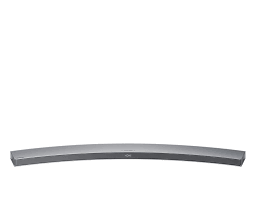
On Wednesday evening he asked his father, Vic, “daddy what’s wrong with us? Why won’t anyone pick us?”. His father’s voice, grit with dust and old age, coughed and smiled, “We would be fine “, He said not sounding sure of himself. Nzi didn’t know the 32” soundbar had thought of ending his misery with the HDMI cable just that morning.
Sad Thursday

On Thursday mummy told them, amid tears, she had heard some of the store reps talking about getting new stocks and sending their family back to the store-room👩🏻
Thank God its Friday

On Friday evening, just as the truck pulled up, (the one that carried Nzi’s dismay), a young couple, all over each other walked in. Nzi could taste the sweet taste of their fresh love on his rusty tongue. “Well it doesn’t matter”, he thought.. “they won’t pick us”. There’re newer, better speakers on that truck. The Nzi family wasn’t even dusted to start with.
A clerk, sulking and dissatisfied with her job started clearing the shelves. The family of speakers saw all hopes of living in a house and adding melody to a persons day fade into a store-place of everlasting darkness. As they were being carted away, the young man of the couple called out “can we test that one?”. The saddist clerk tried convincing him of the novelty of the new comers but he would have none of it. He said he had done some research and people had really bad reviews about the other speakers. He said the Nzi family would be perfect for their new living room.
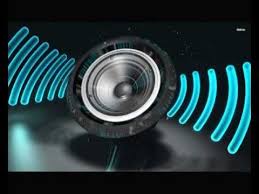
Well, the saddist reluctantly plugged daddy in and connected Nzi and his little sister to their mother. When he turned on the switch, new energy coursed through their veins. Daddy felt alive again. Then came the music.. it was wonderful. Nzi and his sister sang their lungs out. Their mother did her thing and daddy sang like a whole choir🗣🗣🗣.
Then mummy heard the magic words “we’d take them”. Viz wept like a baby. They sang even harder. 🎶
The saddist clerk shut them off, put them in the carton and helped the beautiful couple load them into their new BMW I-something or the other. The darkness of the trunk was a welcome one, because Nzi knew soon he’d be singing to make a “truly happy” couple happier. Now, store life was history and they had their whole lives ahead of them. Maybe he would meet a pretty MacBook Laptop and hit it off with her💏, he thought smilingly 😍. Even his sister 👧🏻 was smiling and playing with the remote; what a happy day.
I bet you didn’t know the penis could change its size and shape to suit certain environmental influences such as temperature and sexual arousal. These normal changes do not negatively impact the penis size and function. Additionally, redistribution or the collection of body fat surely can make the penis appear smaller than normal, although there may be no change in its real size. A healthy penis is not just about how well a male performs in the bedroom, but also about how it functions on a day-to-day basis. If the penis is not able to get erect, it could reflect problems that go beyond sex, an indicator of problems with other organs in the body (such as the heart and testes).
PENIS SHRINKAGE
Penile Sensitivity
Some Causes
Common Causes Of Penis Shrinkage
Treatment of Penis Shrinkage
(adsbygoogle = window.adsbygoogle || []).push({});
Hormonal fluctuations can affect the body’s ability to maintain stable blood sugar levels, so reducing sugar intake is a major component to weight loss and maintenance. But an all-or-nothing approach is not the way to go when it comes to the sweet stuff, says Gibbs. While the women in her study who reduced their sugar intake lost the most weight, and had maintained that loss 4 years after the study began, she’s quick to say that these women reduced their sugar intake—they didn’t eliminate it altogether, which is a tough habit to keep up with (and can lead to binges). Refined sugars, like those in cookies and cakes, are the ones you should reduce. Keep the natural sugars that are found in fruit as your main source of sweetness.

